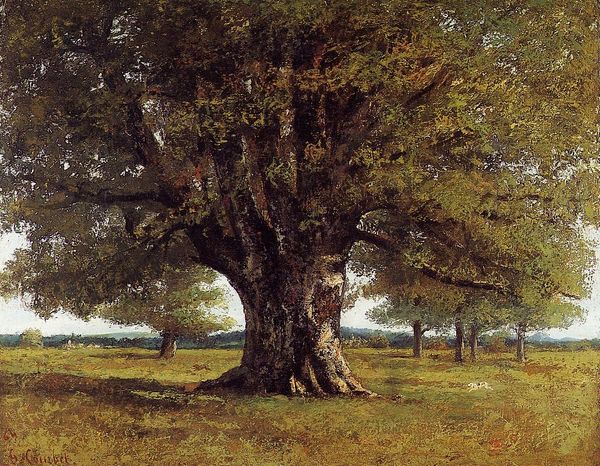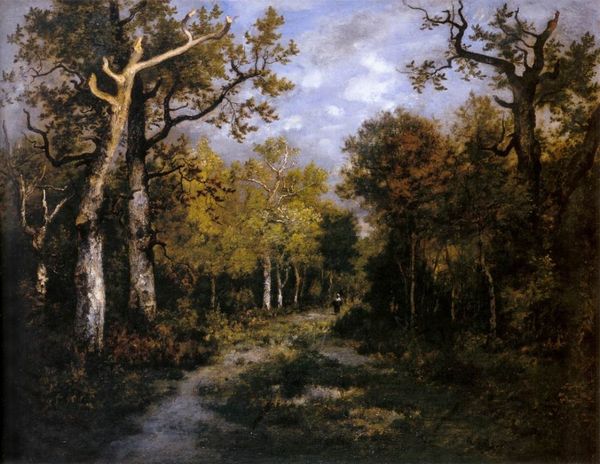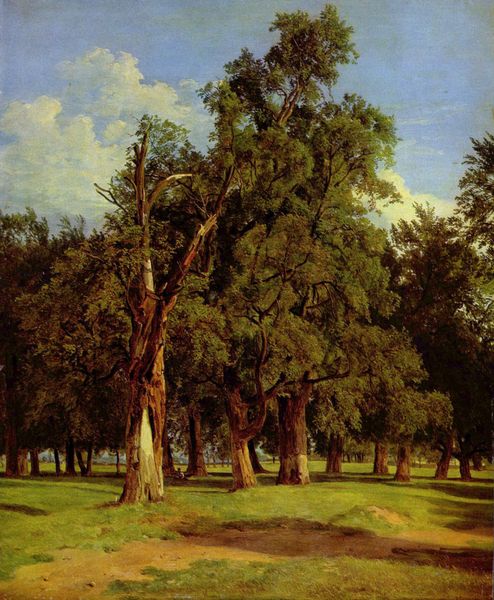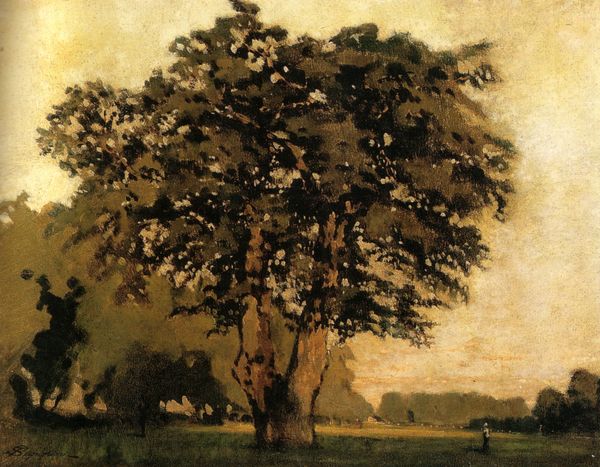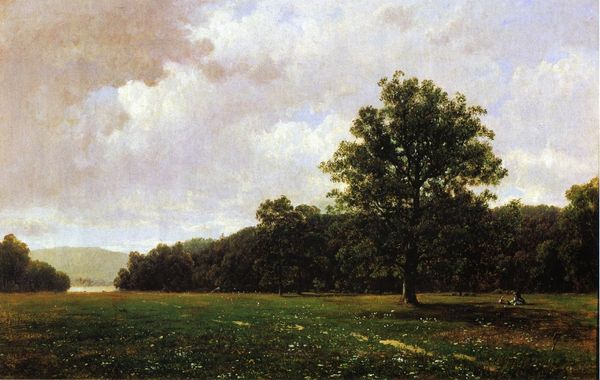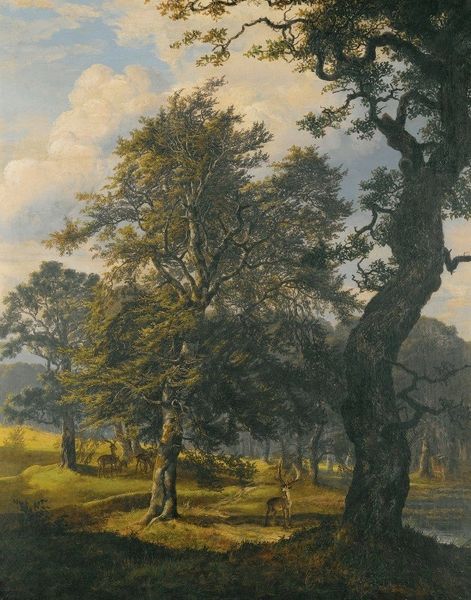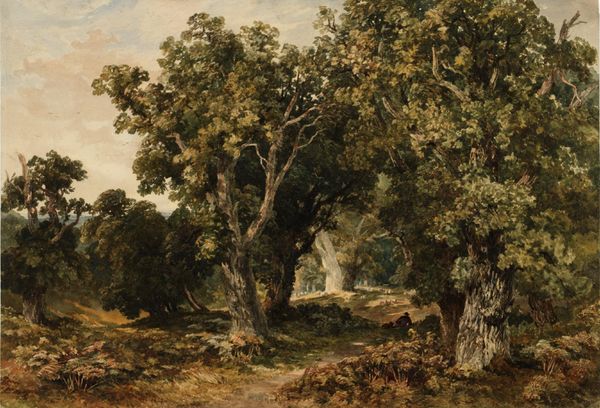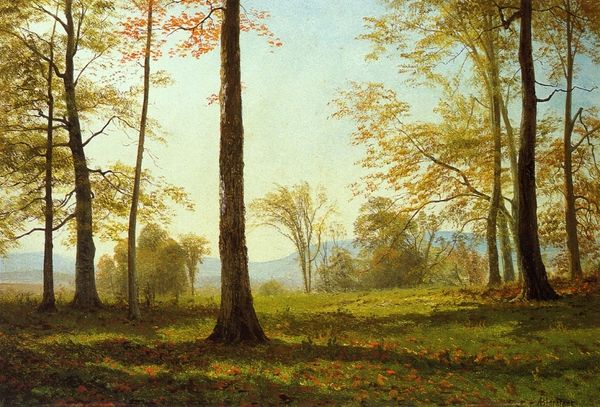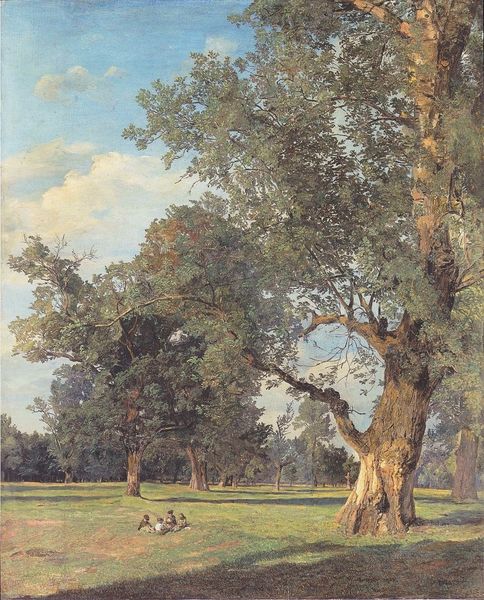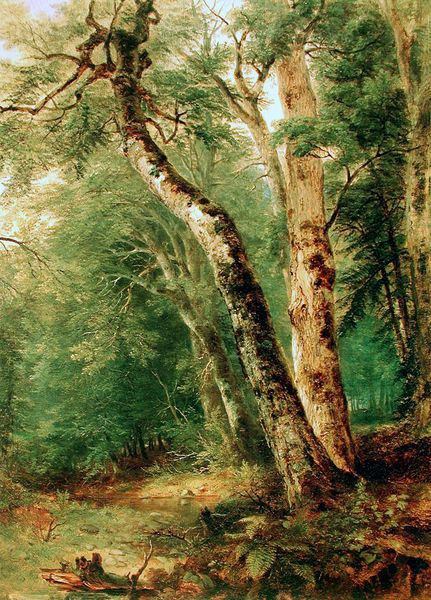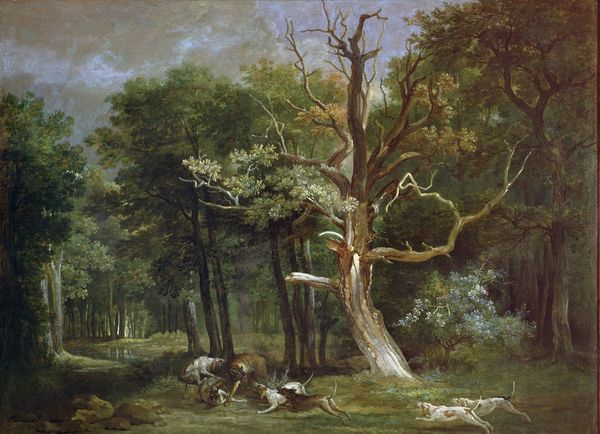
Dimensions: 48.26 x 65.41 cm
Copyright: Public domain
Editor: So, this is Albert Bierstadt's "Pioneers of the Woods," painted in 1858. It's oil on canvas, and the overall impression is…majestic. The trees are so large and imposing, almost like sentinels. How do you interpret this work, especially considering the title? Curator: It’s easy to see this through the lens of Manifest Destiny. Bierstadt was working at a time of massive westward expansion in the United States, fueled by a belief that it was the nation's God-given right to expand across the continent. What do you think the artist is communicating through his emphasis on light and scale in a landscape like this? Editor: The way the light breaks through the trees almost feels like a divine blessing on the landscape, suggesting opportunity and perhaps even a justification for westward expansion. It's almost like these pioneers were ordained to be here. But doesn't romanticizing this landscape obscure the very real displacement and violence enacted upon Native populations? Curator: Precisely. These paintings weren't neutral depictions; they actively contributed to the cultural narrative supporting expansion. Bierstadt’s works and others from the Hudson River School are beautiful but complicit in justifying a specific historical trajectory and shaping an idea of the ‘American landscape’. Considering that art patrons at that time were often involved in westward expansion and its industries, do you see a connection? Editor: It is hard to look away from the patrons… Their tastes actively reinforced these depictions as symbols of progress and the value of taming untouched wilderness. This highlights that these landscape paintings served not just as pretty pictures, but as potent tools in shaping and supporting policies about land and resource ownership, right? Curator: Absolutely. By examining the historical context and the patrons' investments, we reveal the ideological underpinnings of what initially appears as a serene, almost untouched landscape painting. It prompts us to think critically about how landscapes, art and political motives intersected. Editor: I see that this painting carries such complex socio-political layers behind what seems like simple appreciation of the outdoors. It definitely gave me some things to consider!
Comments
No comments
Be the first to comment and join the conversation on the ultimate creative platform.
